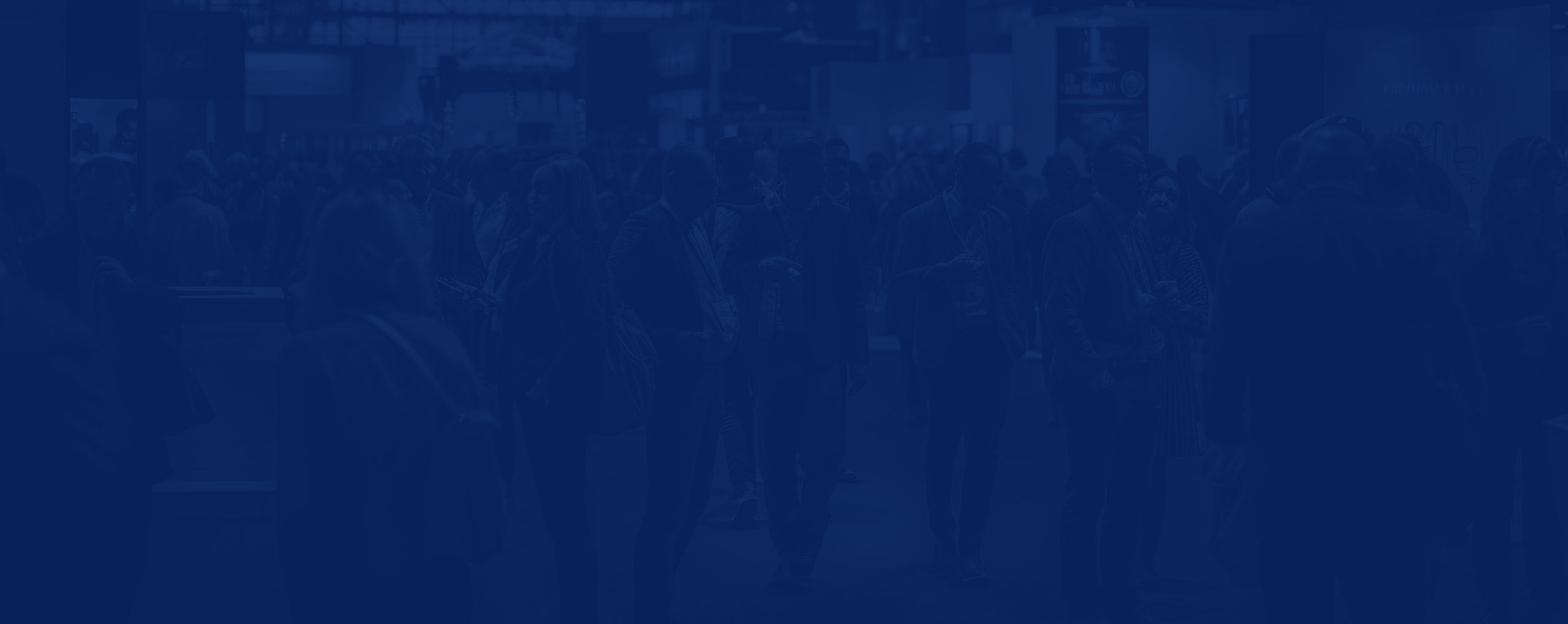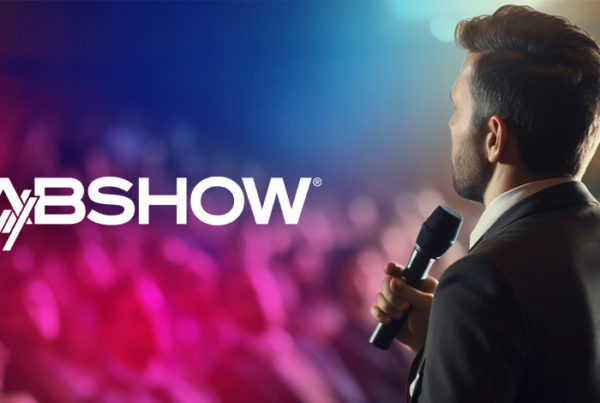The 2024 NAB Show was another standout event for our industry. The NAB reported increased attendance and delivered a variety of keynotes, panels, forums and more. As an NAB member, Marketron had a team of attendees. We were a lead sponsor of the Small and Medium Market Radio Forum (SMMRF) and attended many sessions. Now, we’re breaking it all down with trends and insights that local media needs to know.
SMMRF Taps into What Radio Needs to Know
During the SMMRF event, attendees participated in many roundtable discussions. Dustin Wilson, our senior director of digital strategy, was the co-moderator for How to Launch and Manage Digital Ad Sales Effectively.
What we heard from those at the tables was a mix of questions, concerns and excitement. Some radio stations still haven’t taken the plunge into digital. They noted that it’s complex, there’s a lot of competition, and their sellers aren’t experts. The good news is that the barrier to entry for selling digital advertising is lower than ever. You don’t have to know everything about digital to sell it and be profitable. It would be impossible to know everything! Plus, it’s constantly changing.
We recommend getting familiar with digital by reading our site, Aspire. It has everything local sellers need to get up to speed and confident. Our digital advertising platform, Marketron NXT, is also simple. We built it for radio, so the learning curve is less steep.
A good thing to remember, which Wilson reiterated during the roundtable, is that selling digital is really about addressing the challenges of businesses and how advertising solves them. Asking the right questions and creating relationships is much more valuable than being an expert in programmatic ads.
The Economic Outlook
A panel also discussed the economic outlook at SMMRF. Nicole Ovadia, VP of forecasting and analysis at BIA Advisory Services, shared some positives. She noted that more political advertising is coming for local media. She stated that even very blue or red areas can also win here. The type of ads they’ll see would be more on the fundraising side versus influencing people to back a candidate.
Ovadia did comment that radio would get a smaller slice of this. However, this doesn’t really align with the value of radio for political (more on this in a bit). Local and down-ballot races will primarily fuel spot sales.
Overall, the economy is healthy and growing, and economists no longer foresee a recession. These are good signs that the rest of 2024 will be solid.
Radio Has More Reach Than TV!
Westwood One also presented some data about radio’s reach during SMMRF. It now outperforms broadcast TV. AM/FM radio is the leading mass media for reach in the U.S. at 84%, versus 72% for TV. It reaches 40% more people ages 18 to 49 than TV.
Those are historic numbers, and much of it concerns the nature of audio. In a previous post, we shared how audio ads outperform video in terms of attention and recall.
The Westwood One presentation also reminded attendees that only about 5% of those encountering ads are in the market. What radio does do well is consistency and frequency. People often remember the brand when they become the 5%. Another key point was that adding radio to a media plan generates a 28% increase in reach compared to just using TV and digital.
AI Was Everywhere
AI was the topic that had the most sessions in 2024. A robot was even part of the keynote. The reality is that this technology is becoming part of media’s fabric. There are many applications of it, along with concerns and trepidation. Some radio stations use it as on-air talent, mostly during overnight shifts.
Listeners generally oppose this, so stations should consider that when making decisions. Radio’s value is in the connections that personalities have with the community and those who tune in.
Other common use cases include leveraging AI for creative content, from ad copy to videos for OTT/CTV. It can be a low-cost, efficient way to support advertisers. However, remember that AI isn’t perfect. It tends to be overly awkward in what it “writes” and not realistic in the imagery or video it “creates.”
AI can be great at analyzing data and automating repetitive tasks. In this way, it does the work that’s too laborious for human intelligence. It can serve up insights that we can then take to explore further and make data-driven decisions.
There’s also a big concern about the nefarious use of AI to create deepfake content. Media companies are dealing with the burden of determining if it’s real or fake. For example, much of the alleged video from the current Middle East conflict was AI-generated.
Radio Is Severely Undervalued in Political Advertising
As mentioned, radio isn’t getting its fair share of political spending, even though it’s reaching more people than traditional TV.
A panel of experts debated this at the 2024 NAB Show. They reiterated the decline in linear TV viewing yet relayed that it’s the biggest winner in terms of political spending.
Many political media buyers haven’t been doing their research and are sticking to the status quo. Panelists did say that candidates making buys themselves were more likely to diversify.
The presenters encouraged radio sellers to be more active and aggressive in getting these dollars. There are many misconceptions to address, but there’s data that proves how effective radio is. One potential way radio could see a bigger windfall is by having available inventory. Large spenders may buy up broadcast TV to capacity, and radio can swoop in to achieve local reach.
More Digital Chatter: FAST Channels, Differentiators and Profitability
Some additional digital trends at the 2024 NAB Show included a few more buzzworthy topics.
FAST Channels: More OTT/CTV Inventory, But…
FAST channels are free ad-supported streaming TV. They are free to watch with ads that aren’t skippable. There seems to be one for every type of content you could imagine. Many think it’s hit a saturation point because there’s only a finite number of watchers. Consumers, in general, have been reaching a point of fatigue in streaming. They’re exhausted by all the choices!
The concern about FAST channels is that the content is rarely original. It’s like modern syndication, playing reruns of TV classics and well-known movies. So, it’s hard to call it “premium” compared to Netflix, Hulu or their peers.
Something that may bode well for FAST from a local sales perspective is that many businesses play these channels. Nail salons, restaurants and other shops have TVs tuned to FAST channels, meaning the audience is greater than just a single user or household.
Differentiating Your Digital Ad Capabilities
Most digital advertising is a commodity. It’s basically the same no matter how it’s purchased, but there are some distinctions. First, DSP (demand-side platform) quality varies. Not all DSPs have the proper parameters and access to premium inventory. Second, not all DSPs allow for restricted category advertising for industries like cannabis, alcohol, gambling and political. There are also other nuances around targeting abilities and geofencing options.
Fundamentally, what differentiates you from a competitor are these things:
- You can provide an advertiser with radio spots, O&O (owned and operated) ads and third-party digital.
- Your local sellers know the market, which helps them put together an ad package to achieve specific goals.
- Radio is more trusted in the market than any other type of media, and you are part of the community.
Becoming More Profitable in Digital Sales
Finally, another theme that wove its way through the 2024 NAB Show was making digital more profitable. Some stations are struggling. Digital doesn’t have the margins of O&O and radio, but it usually has a higher budget.
What’s making it less profitable?
- Commissions may be eating away at margins.
- They’re losing money on the execution part if they outsource this to an agency or do it all in-house. You have to pay those folks, so they get another slice.
- Campaigns aren’t running long enough to produce revenue. There’s all the work to get them going, and then they’re over. Sellers should think about campaigns in terms of months, quarters and years.
- Some digital ad platforms media companies use keep increasing and adding on fees, further weakening profits.
We understand these challenges and have created a platform, training, education, sales enablement, access to digital strategists and more to get you from selling digital to profiting from it. Digital is a revenue stream with healthy growth that complements radio really well. You’ll need it to fill the gaps as spot revenue stays mostly flat.
This philosophy is the foundation for Marketron NXT. It’s an easy-to-use solution with robust features that connects to your traffic system. These things make NXT an industry leader. It won the Radio World Best of Show award at the conference, its second time earning the honor.
Keep up with all the trends important to radio and local media by bookmarking the Marketron blog and subscribing to Aspire.






